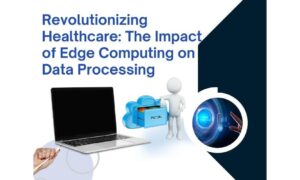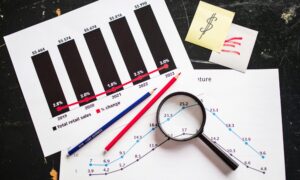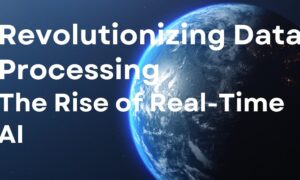Data analytics is a much-hyped term often synonymous with business analytics. However, while data and business analytics require data as a critical part of the process, they differ significantly.
Business analytics is all about data analysis to help drive business decisions. The objective is to answer questions like “What if?” “What should I do?” or “What’s happening?”
On the other hand, data analytics collects, cleanses, and analyzes data (including structured and unstructured data) to gain insight and knowledge. Read on to learn more about the differences between data analytics and business analytics.
What is data analytics?
Data analytics is a process used to examine data to uncover hidden patterns and trends, which businesses can use to make informed business decisions.
While data analysts are often associated with the tech industry, they have become a vital part of an organization in almost every industry. In today’s digital world, most organizations collect vast amounts of data, whether they’re large corporations or small startups.
But much like with any other resource, the information collected can become useless if it isn’t correctly managed. That’s where data analytics comes in. Data analysts use tools and techniques to help them understand the underlying meaning of information collected by an organization.
With this information, they can make recommendations and assist businesses in making decisions that will increase productivity or revenue and improve their overall efficiency.
What is business analytics?
Business analytics is a subset of management science. Business analytics deals with the statistical analysis of data and analytical models to make better decisions.
Business analytics is often used interchangeably with business intelligence. Still, there is an important distinction: Business intelligence uses a consistent set of metrics to measure past performance.
In contrast, business analytics uses data-driven insights to improve future performance by enabling predictions about future outcomes. For example, if you’re a bank that’s seeing a high influx of young customers, they will be probably be asking questions such as “how old do you have to be to get a debit card?” or “can my bank help me with my student loans?”. These questions are great business insights that will give you an idea of products you can offer or expand upon for your customers.
Business analytics provides insights for day-to-day decision-making as well as long-term strategy development.
For example, a company can measure how much money they make from its products in different cities using business analytics. They can then use this information to determine which cities are the best places to sell their products and which ones are not worth investing in.
Business analytics analyzes data and monitors current systems and processes, and suggests changes when needed. It can help companies find ways to streamline processes, improve efficiency and increase profitability.
For example, if a company finds too much inventory of a specific product, it may change production schedules or sales tactics to get rid of those items more quickly.
Data analytics vs. business analytics: How do they compare to each other?
Both data and business analytics refer to data to answer questions and make strategic business decisions. The difference between the two is in how they go about it. Both analyze data sets, looking for trends to help make better business decisions.
Data analytics is a subset of big data analysis
Data analytics focuses on studying the patterns and trends in large amounts of data to make predictions and provide insights into these patterns.
Business analytics involves extensive statistical methods to analyze the effectiveness and efficiency of an organization or enterprise and its competitive position with other organizations.
Data analytics: Discovers trends and insights
Data is the raw material for all analytics projects. Data analytics explores that data to discover hidden patterns, unknown correlations, and other helpful information. With this information, businesses can make better-informed decisions and optimize their operations.
Analytics is a broad term describing any process or methodology used to convert data into insights. There are two primary forms of data analytics:
- Descriptive.
- Predictive.
Also, it has two general approaches to performing analytics:
- Structured.
- Unstructured.
The key to data analytics is understanding how the results are obtained from the basic data orchestration through a variety of different methods, including:
1. Data mining
Data mining is essentially the process of sorting through large amounts of data and picking out relevant pieces of information. Data mining can include web crawling and data scraping.
Certain types of data are searched for and extracted, and more complex processes like sentiment analysis extract opinions from large pools of social media or news articles.
2. Data processing
After gathering the necessary data, it needs to be processed into a form that will be useful to its consumers. The exact form will depend on what kind of analysis is being done and what conclusions are drawn.
This step applies a series of algorithms to the raw data to convert it into text, numbers, or a visual representation (like a graph). We can use data visualization tools like Tableau, PowerBI, ChartExpo, Chartio, etc. as well to do the work.
3. Data modeling
Once the necessary information has been extracted from the raw data, it needs to be organized to draw meaningful conclusions.
4. Business analytics
Business analytics involves the processes and technologies for data analysis. Business analytics aims to help businesses create value for their customers through customer feedback and gain a competitive advantage in their industry.
Data analysis can lead to new ideas and solutions to business problems. By analyzing customer data, it’s possible to discover hidden patterns to make better decisions
Business analytics solutions may range from simple spreadsheets with charts to complex, integrated analytics solutions that include data mining and predictive analytic tools.
Summing up
Data and business analytics are two different things, but both are important to an organization’s success. Each has its strengths and weaknesses, so it is essential to use them to get a complete picture. Organizations need to understand the difference between the two to make the best use of each.



































